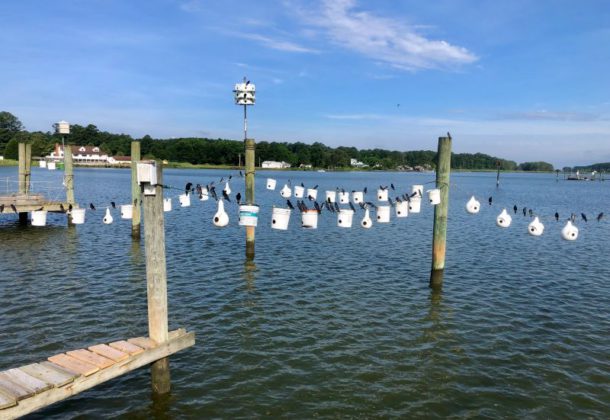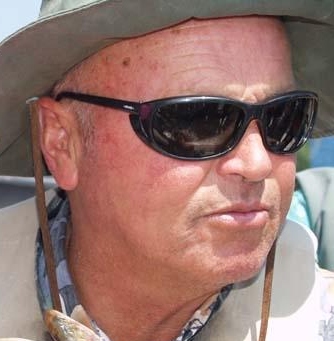Poetry from a Captain – Martins Ahead

Message from the Cap’n is a compilation of fishing advice, waterman and weather insights, Chesapeake lore, and ordinary malarkey from the folks who keep their feet wet in the Potomac and St. Mary’s rivers.
The Purple Martins usually come here between the 10th and 13th of April, rest a little, scout the area, and then begin nest building. You will know when they arrive. They start singing and don’t stop through the course of their stay.
[A few scouts have been visiting the string of nests strung across the piers at Sea-fruit Oyster House as March comes to a close. Indeed, the early twitters struck Cap’n Jack so strongly this year he has burst into poetry, which follows:]
-
Martins
- Visitors return in the Spring.
- A beautiful chorus do they bring.
- Singing and fluttering before dawn’s light,
- Makes one’s morning wonderfully bright.
- Gathering from the ditches nesting stuff,
- Mixing mud and needles together enough,
- Later for the Willow leaves that hide the clutch
- So all intruders are flummoxed with such.
- Flying insects keep all well fed
- Numerous trips are made to the bed.
- Cleaning the nest is no small chore
- Wrapping the refuse to take to the shore.
- Always here by the April moon
- Singing out their awesome tune.
- Very active in nesting the Summer thru,
- Gone by August 1, Time to renew.
Described by the American Bird Conservancy, the Purple Martin, North America’s largest swallow, is a swift and skilled flyer: The birds eat, drink, and even bathe on the wing. The species is part of a group of birds known as aerial insectivores — birds that feed on airborne insects. But they do not eat as many mosquitoes as one might think. (Or hope!) They feed on dragonflies more than anything else.
They are cavity nesters, but the eastern populations depend almost entirely on manmade housing. Housing can be as expensive as one might like. I find that 2-gallon buckets, strung out over the water at my dock, work perfectly well as numerous birds come back year to year.
The Eastern Ratsnake, as described by Maryland Department of Natural Resources, is better known locally as a black snake. It is the biggest predator of Purple Martins at my location at the mouth of the Potomac River in Maryland, 20674. They are the biggest reason that many colonies are lost.
Black snakes are good to have around as they keep mice and rats at bay and are known to kill copperheads. But they like bird eggs and baby birds as well. Wiping out a few nests can empty that nesting area for years, even decades.
After much consternation and discussion with fellow birders, bird netting for fruit trees, is the best protection that I have found.
This bird netting wrapped around pilings and poles will entangle the snake, holding them till they can be “surgically” removed and relocated. By that, what I mean, the netting must be cut from them. Because their heads are smaller than their bellies they will continue into the netting until they ensnare themselves.
Black snakes, weather, and other conditions can create a nest failure which will sour your birds about returning next year. Clean houses and repairs during their absence can help convince them to return year after year, bringing their summer of song with them.
But until the scouts return with the flock, only the osprey are filling the creek with bird cries, the anticipation of the Purple Martin.
’til next time, remember “It’s Our Bay, Let’s Pass It On.”
To learn about tours and trips into the Chesapeake, keep in touch with Fins + Claws on Facebook. Catch up on Messages from the Cap’n Member Page. Please visit Cap’n Jack’s lore and share with your social media sites. Or reach him here: [email protected] or 240-434-1385.

























Wrapping the refuse to take to the shore?
They do that?